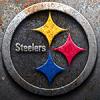
Originally Posted by
Scott Shepherd

Ross, a couple of comments. First, it's my understanding that Accent lobbied to have the "dome" part put in the law, but it's my understanding that it's not in there. I confess, I haven't looked for it since we use balls, so it doesn't matter. If it is in there, I seem to recall the people at Nova having a solution for it. It's in the way the graphic is done and the coating applied. I can promise you that what comes off those machines is ADA compliant. If not, it wouldn't be the machinery used to make the vast majority of every sign in every large complex in the USA.
As far as I know, domed/rounded is part of the rules and regulations as of a few years ago. As I said, you have to make sure as SOME aren't ADA compliant. I have first hand experience with receiving something that was not ADA compliant made by a polymer setup that was something like 15-20 years old. I don't know the details off making the braille domed/rounded, but I do know in their circumstance it was an extra step/process. My point really is that if you wanted to buy one of these machines, make sure you're getting domed/rounded braille and not flat top.
Equipment: IS400, IS6000, VLS 6.60, LS100, HP4550, Ricoh GX e3300n, Hotronix STX20
Software: Adobe Suite & Gravostyle 5
Business: Trophy, Awards and Engraving





 Reply With Quote
Reply With Quote


